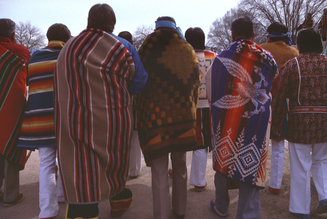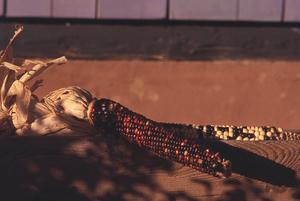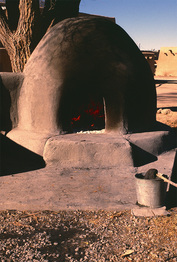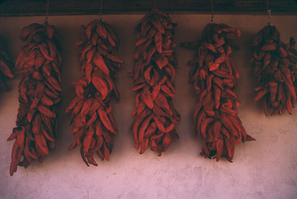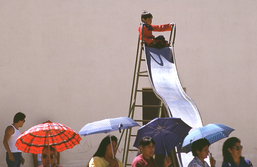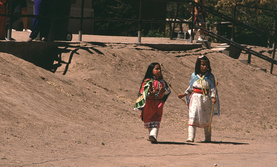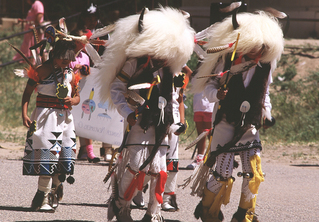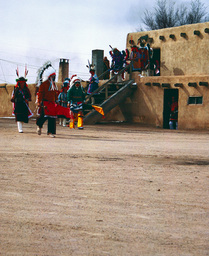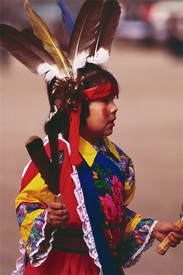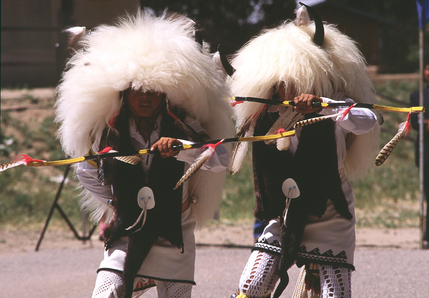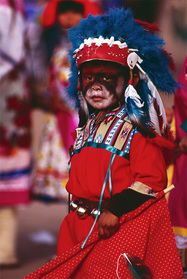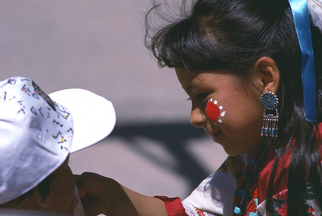Feast Days
Nearly all of the pueblos in the Southwest hold Feast Days. These days are named after each pueblo's patron saint, but are also a way to renew their traditional religions and relationships. Most of the Feast Days I have seen have traditional dances, traditional music, and food!

These Feast Days are sometimes open for everyone to come. If you are lucky, you may be invited to visit someone's house to share in the bounty. Here are some of the foods you may find:
* Red beef chunk chili with potatoes
* Green chili stew with ground beef
* Posole – pork or elk, chili, and hominy stew
* Smoked or baked ham
* Beans with bacon
* Potato salad
* Yams with butter and brown sugar
* Watermelon and canteloupe
* Bread baked in an horno, a beehive-shaped outdoor oven
* Piki bread - paper-thin bread from corn
* Cookies
* Jello
* Bread pudding with cinnamon
* Ice tea, lemonade, and coffee
* Red beef chunk chili with potatoes
* Green chili stew with ground beef
* Posole – pork or elk, chili, and hominy stew
* Smoked or baked ham
* Beans with bacon
* Potato salad
* Yams with butter and brown sugar
* Watermelon and canteloupe
* Bread baked in an horno, a beehive-shaped outdoor oven
* Piki bread - paper-thin bread from corn
* Cookies
* Jello
* Bread pudding with cinnamon
* Ice tea, lemonade, and coffee
Typically, when you enter your friend's house, there will be a large table at the center of the bustle. When you sit down at the table, you may be sharing with friends you haven't met before, but everyone has some link to the family hosting the meal. Now, between bites, is a terrific chance to get to know them.
When you're not eating, you probably will be standing or sitting somewhere in the central plaza of the pueblo, along with crowds of people. Here, you wait patiently. If you are alert, you might hear the faint sounds of drums and singing somewhere in the village. Then, a stir in the crowd. The dancers are coming!
The drums sound louder as the drummers come into the open. If it is a deer dance, the jingle of small bells keep time with the steady, rhythmic step of the buffalo dancers while the more agile antelope dancers take quick, erratic steps, and the deer dancers wear antlers and hold sticks so they can dance on four "legs". For Comanche dances, the dress is colorful and the feathers plentiful.
At the Taos Pueblo, the Feast Day is a little different. There are footraces and koshare who tease people in the crowds (and generally remind people what it means to misbehave). Then the koshare climb a 50-foot pole to retrieve a bundle of food at the top. At San Ildefonso Pueblo, part of their Feast Day occurs at night when rows of bonfires and luminarias glow golden around the central plaza. Every Feast Day has its own characteristics and is a unique experience.
These dances are an important community experience. There are tribal members who return from busy jobs elsewhere just to dance. Children as young as five and elders in their seventies might participate as well. The simple dance steps of most of these dances encourages everyone to join in.
If you go to a Feast Day, please enjoy yourself, as these are joyous occasions. But also remember that these are not performances for the benefit of tourists. Instead, like an Easter Sunday mass or a Yom Kippur celebration, they hold deep meaning for the participants and should be treated with respect.
All images and text – © 2015 by Pauline Ts'o. All rights reserved.

